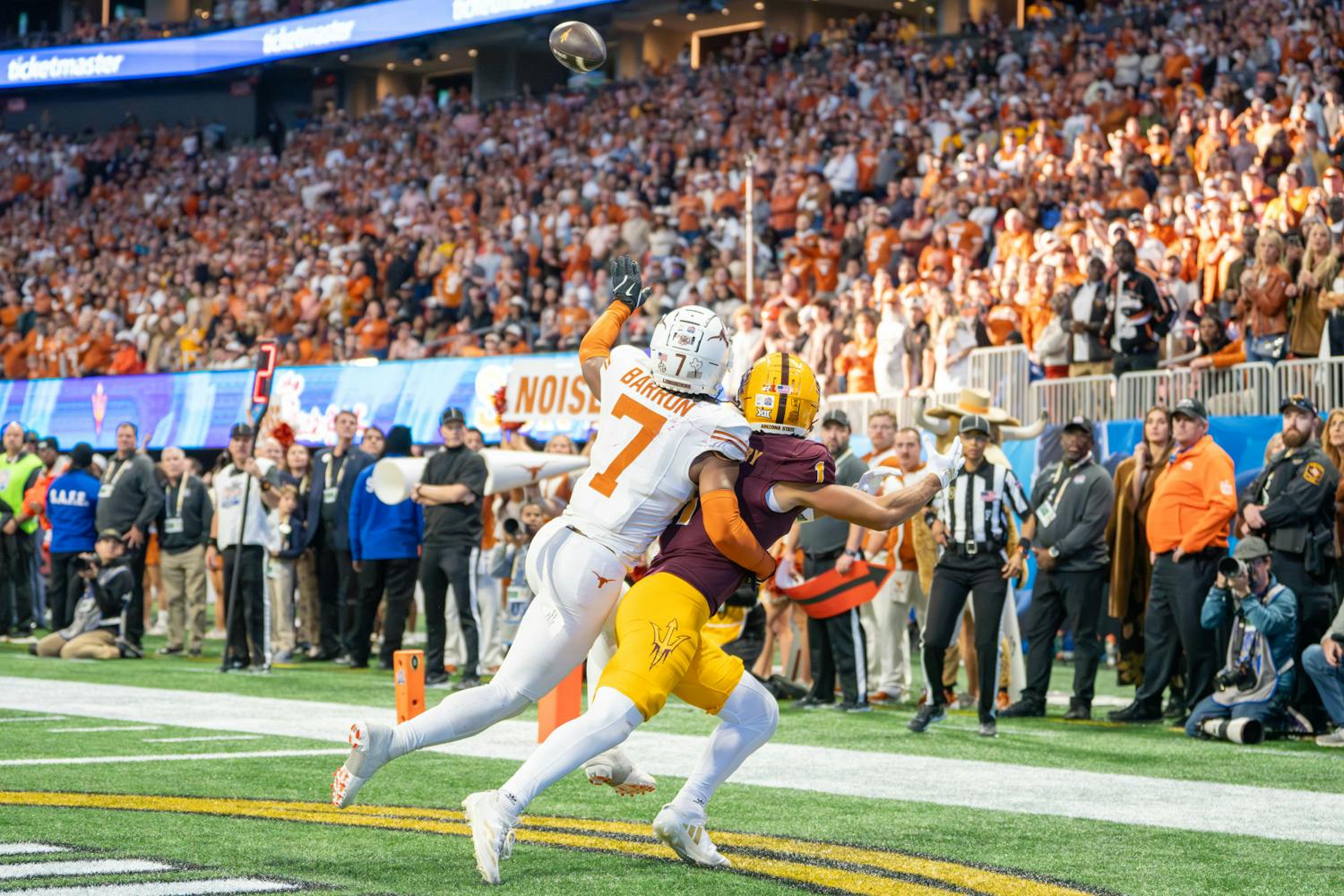Sophomore Bailey Wigness’ speed presents a major problem for opponents, but it is her ability to adapt to the changes a fluid lineup throws at her that helps ASU the most.
Wigness has now become the team’s most popular option at second base and has fit in better than anyone could have hoped.
“She’s so intelligent that there is no hesitation,” ASU senior pitcher Hillary Bach said. “When she was thrown in at second base, there was never a doubt in my mind that she was going to make every play. She gives 127 percent effort for every ball.”
This is the third defensive position this year for the speedster from Casa Grande, Ariz., after the outfielder tried her hand at third base earlier this season.
“It was hard, but I have practiced at all three positions, so it’s not like I’m not prepared,” Wigness said. “Second base has definitely been the easiest. I was a middle infielder since I was 12 or 13.”
Fortunately for Wigness, she isn’t the only player adjusting to a new position. Senior outfielder Annie Lockwood has played well since moving to first base earlier this year and has been there to provide encouragement.
Lockwood played the position in high school, but it still took a while for her to get back to being comfortable.
“I wouldn’t say my first base skills are really up there, but I’m going to do whatever the team needs to me to do,” Lockwood said. “We are so versatile in the fact that we do practice so many different positions, and we understand the roles of each position … We pride ourselves on being the smartest team in the nation.”
As far as Wigness’ future goes, the sky is the limit. She was recruited to play outfield, but it looks like the position she is most comfortable in is wherever ASU coach Clint Myers needs her.
“The ceiling is quite high for her,” Myers said. “She could be our shortstop for next year when (senior Katelyn) Boyd leaves. I am not sure she has even thought about that.”
Wigness has played in 36 of the team’s 41 games this season. She was dominant early in the season, taking the leadoff spot from Boyd with a .750 on-base percentage. Then Wigness fell into a slump. Tough strike-three calls and bad breaks on ground balls dropped her batting average from around .600 to .450.
Despite the cold streak, Wigness didn’t let it get to her. She kept her emotions in check, learning from the psychological difficulties she dealt with in her freshman year.
“Last year, I let the frustration get the best of me a lot of times,” Wigness said. “In the offseason and the first part of this year, I said I am going to forget that and just work hard to try and break into the lineup this year.”
Wigness still values that experience, though, and understands what a difference one year can make.
“I am so thankful for every experience I had last year, because it definitely made this year so much better,” Wigness said.
This mindset, combined with her speed, has made Wigness, who started 2012 as a backup to senior Talor Haro, one of the most consistently seen names on the Sun Devils’ lineup card.
When asked what she thinks about when she is flying around the base path, Wigness said “scoring,” and left it at that.
The absurdity of this simplicity has carried Wigness to new heights and shown how much of a boost a good base runner can be to a team.
In the UCLA series, Wigness beat out an infield single only to notice there was no one guarding second. Without hesitation Wigness broke for the base, beating out the Bruins’ first baseman in a footrace and bringing the crowd to its feet.
“When I get on base, (I) just try to be smart but be aggressive,” Wigness said. “I do have the ability to do a little bit more than most people but definitely want to try to stay smart and not run into outs.”
Wigness is second on the team in stolen bases this year and has been thrown out just twice in 11 attempts.
Though this number may seem low, it’s because when she gets on base, the team’s best hitter, Boyd, is usually at bat.
At Casa Grande High School, there was no Boyd, and Wigness had the opportunity to steal 30 or more times per season.
This played heavily in her recruitment, which was rather interesting given Casa Grande’s location — right in between UA and ASU.
“Casa Grande, being halfway in between, is pretty split between the two schools, but honestly there was never a doubt in my mind that it was ASU,” Wigness said. “I went to the ASU camps when I was in high school. My high school coach played for coach Myers when he was at (Central Arizona College), so it was ASU all the way.”
Reach the reporter at jjmckelv@asu.edu
Follow us on Twitter or like us on Facebook. Click here to subscribe to the daily State Press email newsletter





